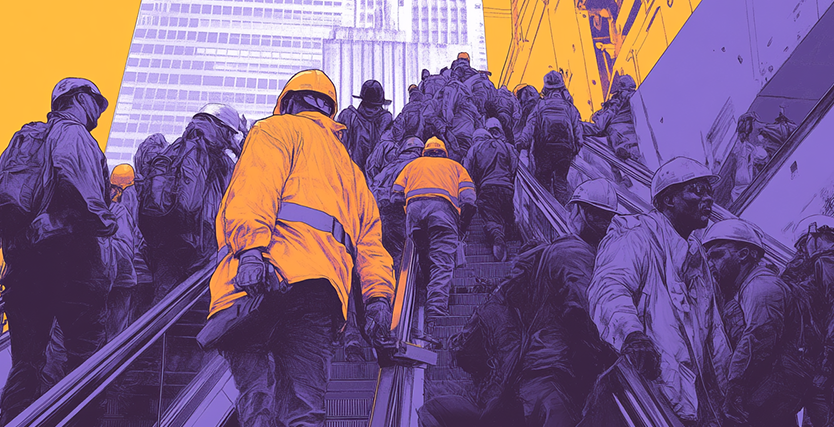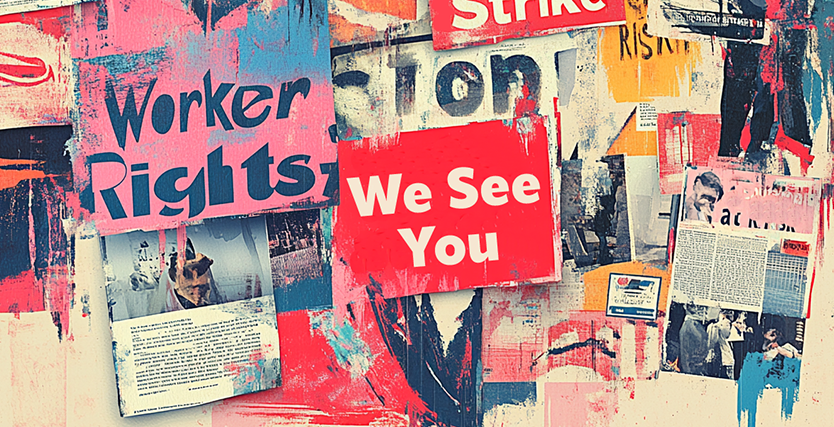Straight to the Point
- WHAT WE SEE: Over the last several years, we have observed an uptick in labor-related challenges — including contentious negotiations, strikes, and organizing elections. Businesses, especially those with large, unionized workforces and vulnerable reputations, have faced increased public pressure and employee activism.
- WHAT IT MEANS: Companies are operating in a new labor environment. Those in high-visibility, complex or highly regulated industries no longer have the luxury of focusing on one issue or topic at a time. Issues are interconnected and the impacts in one area can have spillover effects in many others.
- WHAT TO DO ABOUT IT: Companies must re-evaluate how to approach issues related to organized labor or their workforce. It is important to consider labor wholistically alongside broader issues management and reputation goals.
What We See

After the dramatic, last-minute defeat of President Biden’s renomination of National Labor Relations Board (NLRB) Chair Lauren McFerran in the Senate in December, businesses across the country are perhaps breathing a small sigh of relief. Depending on who President-elect Donald Trump chooses for two open NLRB board seats, the balance of power on the board seems likely to shift away from the decidedly pro-labor approach of the Biden Administration.
But this win for business interests should not be viewed as a bellwether in how union organizing and prominent labor negotiations will proceed during the Trump Administration.
Over the last several years, with some trends starting even prior to the election of President Joe Biden, we have observed an uptick in contentious negotiations, strikes, and organizing elections. Businesses, especially those with large, unionized workforces or vulnerable reputations, have faced increased public pressure and employee activism.
Several factors lead us to believe this labor-related reputation pressure will continue.
- The presidential wildcard. With around 45 percent of union households voting for him, Trump either feels he owes something to organized labor in his new term or believes there is a continued opportunity in to play nice with certain union leaders. Early examples of this dynamic include Trump’s nomination of the Teamster-backed, labor friendly Republican Lori Chavez-DeRemer for Secretary of Labor and his mid-December Truth Social post supporting the East Coast longshoremen over “foreign companies” in the stalled port negotiations.
- Strange political bedfellows. Republicans are no longer reliable allies for corporate America. The same America First populism that strengthened Donald Trump’s victory and that has created strange bedfellows between unions and Republicans like Senators Josh Hawley Marco Rubio and Vice President-elect J.D. Vance on worker issues will continue to make it difficult for companies to count on public support from the right in negotiations and organizing fights.
- Unions are looking for wins. Despite a doubling in union election petitions under President Biden, union membership rates keep falling. Union leaders are looking to reverse this trend and prove their value to members. With public opinion behind them and massive war chests at their disposal, unions – and their allies – will continue to make their case directly to the American people. Savvy union leaders understand what they need to do to drive media coverage, social media attention, and policymaker conversation.
- Left-ward drift by many unions. The labor activist left is seeking wins far beyond the most recent organizing campaign or the bargaining table, making no secret of their desire to remake the American left through union organizing. This loosely affiliated network of individuals and organizations is well-funded with allies across progressive politics who they regularly tap to increase attention and pressure.
What It Means

Corporate reputation and labor relations are intricately linked, with unions applying corporate campaign tactics to other contexts, such as negotiations. As one labor expert observed in a post-election New York Times article, “Unions are very good at destroying reputation.”
Companies in high visibility, complex or highly regulated industries no longer have the luxury of focusing on one issue or topic at a time. Issues are now becoming increasingly interconnected and the impacts in one area can have spillover effects in many others. Companies can’t wait until a negotiation round has kicked off to prepare a communications strategy. Once an organizing effort is underway, it’s often too late to mount an effective reputation defense.
Even if labor policy improves under Trump, companies will still be operating in a new labor environment. One where union bosses are emboldened, the economic fundamentals still give workers leverage, union members aren’t afraid to break with leaders they consider ineffective, and the public largely sees value in and sides with organized labor.
What to do About It

Given these shifts in the labor environment, companies must re-evaluate how to approach issues related to organized labor or their workforce. Depending on the situation, “tried-and-true” tactics and messaging are no longer reliable.
Don’t view labor negotiations as something that happens every four or five years or assume the next organizing effort will fail because the last one did. Instead, consider labor wholistically alongside broader issues management and reputation goals.
To get ahead of future reputation challenges stemming from labor, corporate leaders should:
- Apply a data-driven approach. Know your strengths and weaknesses and use political-style research to understand your key audiences’ beliefs.
- Proactively shape and share your workforce story. Don’t assume that people know how well you pay, the types of benefits you offer, or that the majority of your employees love working for you. And don’t assume others will tell your story for you. The sooner you share a compelling story and educate key audiences with simple, understandable messages, the better.
- Be prepared to run a strong defense, especially in areas where safety, quality and workforce intersect. Unions have become smarter about their messaging. They know that topics such as work-life balance and working conditions can generate more sustained sympathy and support from the public and policymakers. If you are vulnerable in these areas, prepare for attacks.
- Deploy smarter, not necessarily louder, communications.Persuasive messages should be matched to and tailored for key audiences. Discrete deployment of messages and content allows you to reach audiences directly and consistently while reducing the friction that might come from highly visible efforts.
The Purple team has helped some of the world’s most well-known brands manage their reputation through high-profile labor and employee challenges. If you need support in this area, contact us — we are here to help.
For more content like this, subscribe to the Purple Point newsletter here.

 What does corporate leadership look like in a divided nation?
What does corporate leadership look like in a divided nation?  Waiting to Engage in D.C. Is the Most Expensive Mistake You’...
Waiting to Engage in D.C. Is the Most Expensive Mistake You’...  The Era of High-Stakes Uncertainty
The Era of High-Stakes Uncertainty  What Forces are Shaping the Future for CMOs?
What Forces are Shaping the Future for CMOs?